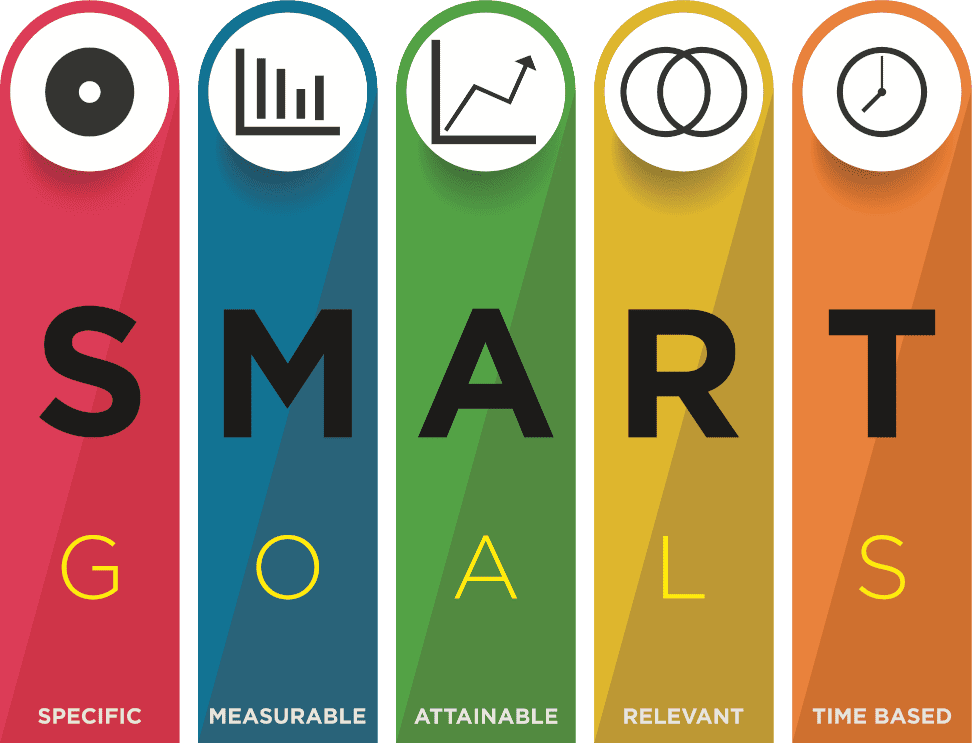New Year, New Goals
It is a new year, the perfect time to envision and achieve new goals! As you can imagine, January presents the ideal time to set short and long term as we embrace the new year ahead! By definition, goals are successive approximations or baby steps, that help provide motivation to achieve what is important in life. Setting realistic goals allows our learners to feel successful and start to establish positive habits. When doing so, it is critical to write short and long-term goals out as small steps to larger goals and to post goals in a location where all members can view them on a daily basis. A fun way to explore goal setting is to do so as a family or as a class community. Eventually, learners can take it beyond the family and classroom, but starting this way allows children to feel like they are in a partnership. Sharing responsibility and ownership ultimately helps to increase personal confidence in setting goals in the future!
Five Steps to Goal Setting
As parents ourselves, we realize that setting and seeing goals through can be challenging, so, we utilize the SMART goal formula to provide structure and hold us accountable:

Be Specific
What do you, your child or your student want to achieve? You must help guide your learner to be as detailed as possible when establishing both short and long term goals. Watch for any roadblocks that could keep them from reaching their goals, and make a plan to get around them. If you are not specific, then you cannot achieve the other attributes of effective goal setting.
Make Goals Measurable
If you know your child’s ultimate goal is to learn all of his/her multiplication facts by the spring, that means your learner has to practice at least 4-5 days a week for 10-20 minutes a day in a variety of ways. Break the goal into bite-sized chunks. Give yourself daily, weekly and monthly steps and maintain focus on those. When your child accomplishes one, then tackle the next one with enthusiasm!
Timing is Everything
Set a reasonable time limit—because you need a finish line. Take that goal of your learner’s, create a plan, and break it all the way down to daily activities. Then, give yourself a deadline. Hint: Planners like the Erin Condren’s Life Planners are perfect for this. They’ll help you manage your schedule, grow as an individual or collective, and crush your goals—no matter what they are.
For example, learners might say, “I want to read all of the Magic Treehouse books by December 31.” To do so, calculate aspects like how many books you must read in a month, how many pages you need to read each week and how many pages you need to read in a day. Then do what you can to hit that goal by your target date.
Keep it Real
Let’s be honest—trying to accomplish someone else’s goals for your life never works out. Sure, parents and teachers might want learners to strengthen certain cognitive skills or learn how to use specific social-emotional tools, but it won’t happen unless it’s the learner’s desire too, striving to win needs to come from within. It’s tough and your learners will not have the drive to stick with it if they are working toward a goal they are not even passionate about.
This also means that goals must be realistic and achievable. If your child or student wants to read the Harry Potter series, but is not yet reading Learn to Read books, then we, as a community, must approach the desire with positivity and manage expectations. Every goal is attainable, as long as we are building in the appropriate sub-goals and setting a rationale timeline!
Seeing is Believing
Something special happens when you write down specific goals and post them in plain sight. Write out your main goals as well as the steps it will take for you to achieve the bigger goals. Dave Ramsey’s Goal Tracker Worksheet is a handy tool for this. Also, if it makes it easier to discuss as a class or family, you can also use this handy worksheet. Seeing your goals in will help you hold yourself, your learner or your class accountable and track your progress along the way together!
Let’s Practice
We explore a sample goal below that, of course, can be modified to meet your family or class’ needs.
Sample Goal:
Purpose: Systematize work spaces in the home/classroom to provide clarity and to eliminate unnecessary stress as well as visual noise, helping learners feel in control and empowered.
How:
- Design a shared visual daily/weekly calendar to provide reliable structure
- Organize work spaces together at the end of each day to eliminate clutter and model organization skills and reorganize on the weekends at home or Fridays at school if something goes amiss
- Create an easily accessible list of at least 10 brain/movement breaks and/or chores to access during “free” time to increase independence
Goal-setting and progress monitoring are key components to developing GRIT (guts, resilience, initiative, and tenacity) and a growth mindset (a topic we will discuss further in an upcoming blog!). Even though it is difficult not to let your learner get discouraged if he or she gets off track, it is important to see through the goals no matter what. Life happens. Remember 2020 and all the “surprises” it had? We all hit speed bumps and roadblocks along the way—pandemic or not and, honestly, that’s more than okay, it’s ideal! As long as we encourage our learners to stay focused on the end goal and keep taking small steps toward getting there, you’ll be on your way to a big life-change. 2021, here we come!
Want to Learn More?
If you would like to read more, below are some additional external resources on Goal Setting:









